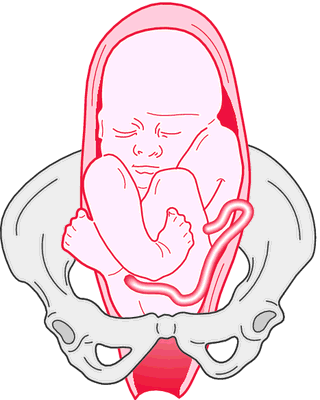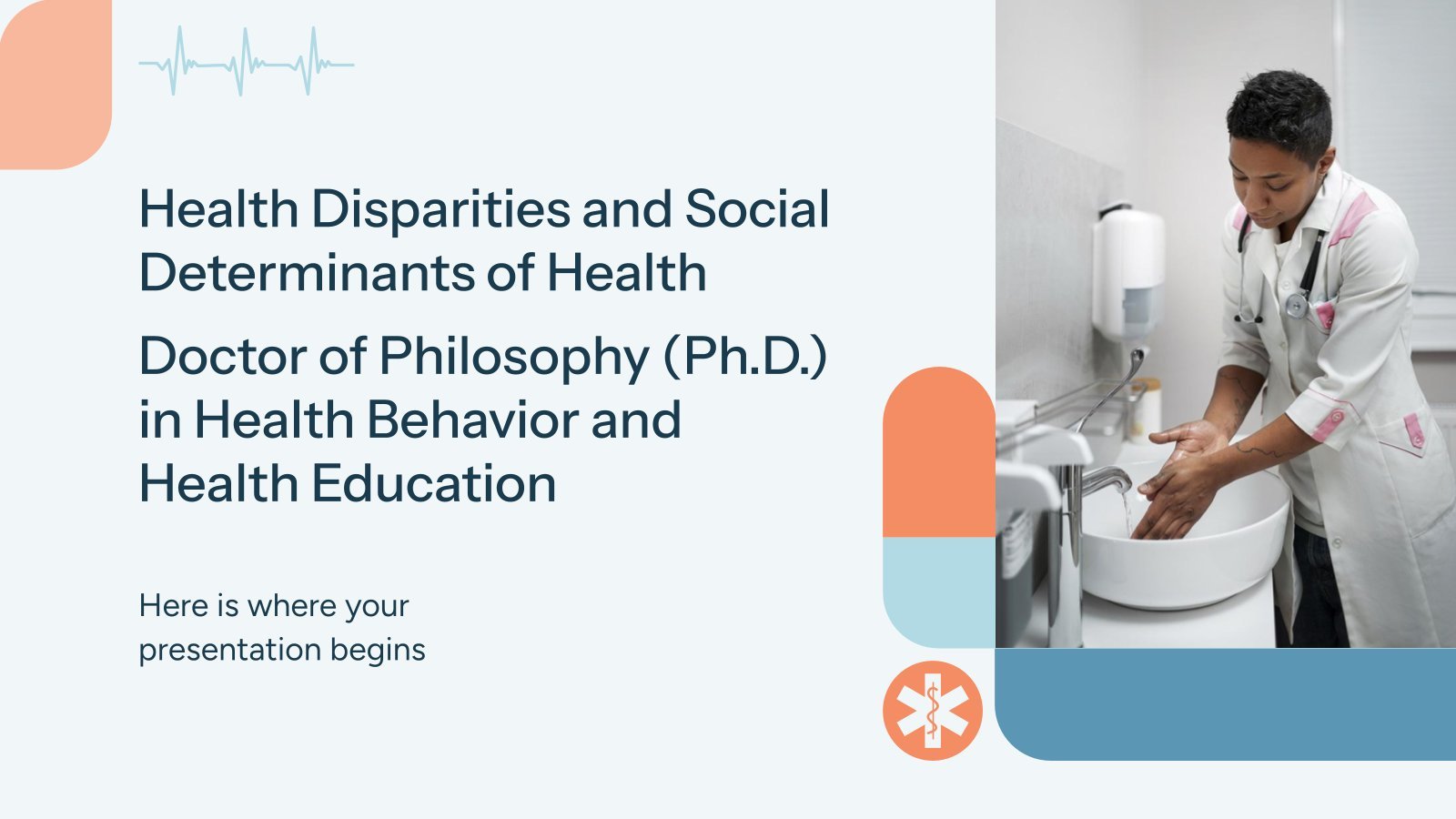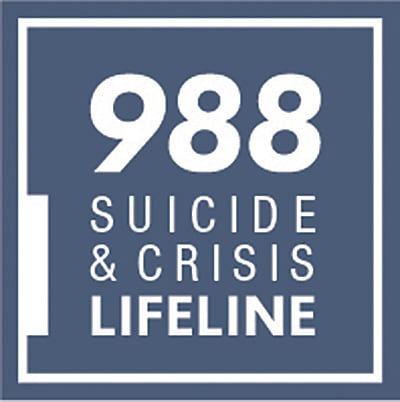
- school Campus Bookshelves
- menu_book Bookshelves
- perm_media Learning Objects
- login Login
- how_to_reg Request Instructor Account
- hub Instructor Commons

Margin Size
- Download Page (PDF)
- Download Full Book (PDF)
- Periodic Table
- Physics Constants
- Scientific Calculator
- Reference & Cite
- Tools expand_more
- Readability
selected template will load here
This action is not available.

1.4: Definition and Concepts of Health
- Last updated
- Save as PDF
- Page ID 11641

- Garrett Rieck & Justin Lundin
- College of the Canyons
\( \newcommand{\vecs}[1]{\overset { \scriptstyle \rightharpoonup} {\mathbf{#1}} } \)
\( \newcommand{\vecd}[1]{\overset{-\!-\!\rightharpoonup}{\vphantom{a}\smash {#1}}} \)
\( \newcommand{\id}{\mathrm{id}}\) \( \newcommand{\Span}{\mathrm{span}}\)
( \newcommand{\kernel}{\mathrm{null}\,}\) \( \newcommand{\range}{\mathrm{range}\,}\)
\( \newcommand{\RealPart}{\mathrm{Re}}\) \( \newcommand{\ImaginaryPart}{\mathrm{Im}}\)
\( \newcommand{\Argument}{\mathrm{Arg}}\) \( \newcommand{\norm}[1]{\| #1 \|}\)
\( \newcommand{\inner}[2]{\langle #1, #2 \rangle}\)
\( \newcommand{\Span}{\mathrm{span}}\)
\( \newcommand{\id}{\mathrm{id}}\)
\( \newcommand{\kernel}{\mathrm{null}\,}\)
\( \newcommand{\range}{\mathrm{range}\,}\)
\( \newcommand{\RealPart}{\mathrm{Re}}\)
\( \newcommand{\ImaginaryPart}{\mathrm{Im}}\)
\( \newcommand{\Argument}{\mathrm{Arg}}\)
\( \newcommand{\norm}[1]{\| #1 \|}\)
\( \newcommand{\Span}{\mathrm{span}}\) \( \newcommand{\AA}{\unicode[.8,0]{x212B}}\)
\( \newcommand{\vectorA}[1]{\vec{#1}} % arrow\)
\( \newcommand{\vectorAt}[1]{\vec{\text{#1}}} % arrow\)
\( \newcommand{\vectorB}[1]{\overset { \scriptstyle \rightharpoonup} {\mathbf{#1}} } \)
\( \newcommand{\vectorC}[1]{\textbf{#1}} \)
\( \newcommand{\vectorD}[1]{\overrightarrow{#1}} \)
\( \newcommand{\vectorDt}[1]{\overrightarrow{\text{#1}}} \)
\( \newcommand{\vectE}[1]{\overset{-\!-\!\rightharpoonup}{\vphantom{a}\smash{\mathbf {#1}}}} \)
In the Oxford English Dictionary health is defined as: "the state of being free from sickness, injury, disease, bodily conditions; something indicating good bodily condition.” Clearly, health is not quite as simple as the definition implies. The concept of health is wide and the way we define health also depends on individual perception, religious beliefs, cultural values, norms, and social class. Generally, there are two different perspectives concerning people’s own definitions of health: a narrow perspective and a broader perspective.
- - Google Chrome
Intended for healthcare professionals
- Access provided by Google Indexer
- My email alerts
- BMA member login
- Username * Password * Forgot your log in details? Need to activate BMA Member Log In Log in via OpenAthens Log in via your institution

Search form
- Advanced search
- Search responses
- Search blogs
- How to prepare and...
How to prepare and deliver an effective oral presentation
- Related content
- Peer review
- Lucia Hartigan , registrar 1 ,
- Fionnuala Mone , fellow in maternal fetal medicine 1 ,
- Mary Higgins , consultant obstetrician 2
- 1 National Maternity Hospital, Dublin, Ireland
- 2 National Maternity Hospital, Dublin; Obstetrics and Gynaecology, Medicine and Medical Sciences, University College Dublin
- luciahartigan{at}hotmail.com
The success of an oral presentation lies in the speaker’s ability to transmit information to the audience. Lucia Hartigan and colleagues describe what they have learnt about delivering an effective scientific oral presentation from their own experiences, and their mistakes
The objective of an oral presentation is to portray large amounts of often complex information in a clear, bite sized fashion. Although some of the success lies in the content, the rest lies in the speaker’s skills in transmitting the information to the audience. 1
Preparation
It is important to be as well prepared as possible. Look at the venue in person, and find out the time allowed for your presentation and for questions, and the size of the audience and their backgrounds, which will allow the presentation to be pitched at the appropriate level.
See what the ambience and temperature are like and check that the format of your presentation is compatible with the available computer. This is particularly important when embedding videos. Before you begin, look at the video on stand-by and make sure the lights are dimmed and the speakers are functioning.
For visual aids, Microsoft PowerPoint or Apple Mac Keynote programmes are usual, although Prezi is increasing in popularity. Save the presentation on a USB stick, with email or cloud storage backup to avoid last minute disasters.
When preparing the presentation, start with an opening slide containing the title of the study, your name, and the date. Begin by addressing and thanking the audience and the organisation that has invited you to speak. Typically, the format includes background, study aims, methodology, results, strengths and weaknesses of the study, and conclusions.
If the study takes a lecturing format, consider including “any questions?” on a slide before you conclude, which will allow the audience to remember the take home messages. Ideally, the audience should remember three of the main points from the presentation. 2
Have a maximum of four short points per slide. If you can display something as a diagram, video, or a graph, use this instead of text and talk around it.
Animation is available in both Microsoft PowerPoint and the Apple Mac Keynote programme, and its use in presentations has been demonstrated to assist in the retention and recall of facts. 3 Do not overuse it, though, as it could make you appear unprofessional. If you show a video or diagram don’t just sit back—use a laser pointer to explain what is happening.
Rehearse your presentation in front of at least one person. Request feedback and amend accordingly. If possible, practise in the venue itself so things will not be unfamiliar on the day. If you appear comfortable, the audience will feel comfortable. Ask colleagues and seniors what questions they would ask and prepare responses to these questions.
It is important to dress appropriately, stand up straight, and project your voice towards the back of the room. Practise using a microphone, or any other presentation aids, in advance. If you don’t have your own presenting style, think of the style of inspirational scientific speakers you have seen and imitate it.
Try to present slides at the rate of around one slide a minute. If you talk too much, you will lose your audience’s attention. The slides or videos should be an adjunct to your presentation, so do not hide behind them, and be proud of the work you are presenting. You should avoid reading the wording on the slides, but instead talk around the content on them.
Maintain eye contact with the audience and remember to smile and pause after each comment, giving your nerves time to settle. Speak slowly and concisely, highlighting key points.
Do not assume that the audience is completely familiar with the topic you are passionate about, but don’t patronise them either. Use every presentation as an opportunity to teach, even your seniors. The information you are presenting may be new to them, but it is always important to know your audience’s background. You can then ensure you do not patronise world experts.
To maintain the audience’s attention, vary the tone and inflection of your voice. If appropriate, use humour, though you should run any comments or jokes past others beforehand and make sure they are culturally appropriate. Check every now and again that the audience is following and offer them the opportunity to ask questions.
Finishing up is the most important part, as this is when you send your take home message with the audience. Slow down, even though time is important at this stage. Conclude with the three key points from the study and leave the slide up for a further few seconds. Do not ramble on. Give the audience a chance to digest the presentation. Conclude by acknowledging those who assisted you in the study, and thank the audience and organisation. If you are presenting in North America, it is usual practice to conclude with an image of the team. If you wish to show references, insert a text box on the appropriate slide with the primary author, year, and paper, although this is not always required.
Answering questions can often feel like the most daunting part, but don’t look upon this as negative. Assume that the audience has listened and is interested in your research. Listen carefully, and if you are unsure about what someone is saying, ask for the question to be rephrased. Thank the audience member for asking the question and keep responses brief and concise. If you are unsure of the answer you can say that the questioner has raised an interesting point that you will have to investigate further. Have someone in the audience who will write down the questions for you, and remember that this is effectively free peer review.
Be proud of your achievements and try to do justice to the work that you and the rest of your group have done. You deserve to be up on that stage, so show off what you have achieved.
Competing interests: We have read and understood the BMJ Group policy on declaration of interests and declare the following interests: None.
- ↵ Rovira A, Auger C, Naidich TP. How to prepare an oral presentation and a conference. Radiologica 2013 ; 55 (suppl 1): 2 -7S. OpenUrl
- ↵ Bourne PE. Ten simple rules for making good oral presentations. PLos Comput Biol 2007 ; 3 : e77 . OpenUrl PubMed
- ↵ Naqvi SH, Mobasher F, Afzal MA, Umair M, Kohli AN, Bukhari MH. Effectiveness of teaching methods in a medical institute: perceptions of medical students to teaching aids. J Pak Med Assoc 2013 ; 63 : 859 -64. OpenUrl
An official website of the United States government
The .gov means it’s official. Federal government websites often end in .gov or .mil. Before sharing sensitive information, make sure you’re on a federal government site.
The site is secure. The https:// ensures that you are connecting to the official website and that any information you provide is encrypted and transmitted securely.
- Publications
- Account settings
Preview improvements coming to the PMC website in October 2024. Learn More or Try it out now .
- Advanced Search
- Journal List
- PLoS Comput Biol
- v.17(12); 2021 Dec

Ten simple rules for effective presentation slides
Kristen m. naegle.
Biomedical Engineering and the Center for Public Health Genomics, University of Virginia, Charlottesville, Virginia, United States of America
Introduction
The “presentation slide” is the building block of all academic presentations, whether they are journal clubs, thesis committee meetings, short conference talks, or hour-long seminars. A slide is a single page projected on a screen, usually built on the premise of a title, body, and figures or tables and includes both what is shown and what is spoken about that slide. Multiple slides are strung together to tell the larger story of the presentation. While there have been excellent 10 simple rules on giving entire presentations [ 1 , 2 ], there was an absence in the fine details of how to design a slide for optimal effect—such as the design elements that allow slides to convey meaningful information, to keep the audience engaged and informed, and to deliver the information intended and in the time frame allowed. As all research presentations seek to teach, effective slide design borrows from the same principles as effective teaching, including the consideration of cognitive processing your audience is relying on to organize, process, and retain information. This is written for anyone who needs to prepare slides from any length scale and for most purposes of conveying research to broad audiences. The rules are broken into 3 primary areas. Rules 1 to 5 are about optimizing the scope of each slide. Rules 6 to 8 are about principles around designing elements of the slide. Rules 9 to 10 are about preparing for your presentation, with the slides as the central focus of that preparation.
Rule 1: Include only one idea per slide
Each slide should have one central objective to deliver—the main idea or question [ 3 – 5 ]. Often, this means breaking complex ideas down into manageable pieces (see Fig 1 , where “background” information has been split into 2 key concepts). In another example, if you are presenting a complex computational approach in a large flow diagram, introduce it in smaller units, building it up until you finish with the entire diagram. The progressive buildup of complex information means that audiences are prepared to understand the whole picture, once you have dedicated time to each of the parts. You can accomplish the buildup of components in several ways—for example, using presentation software to cover/uncover information. Personally, I choose to create separate slides for each piece of information content I introduce—where the final slide has the entire diagram, and I use cropping or a cover on duplicated slides that come before to hide what I’m not yet ready to include. I use this method in order to ensure that each slide in my deck truly presents one specific idea (the new content) and the amount of the new information on that slide can be described in 1 minute (Rule 2), but it comes with the trade-off—a change to the format of one of the slides in the series often means changes to all slides.

Top left: A background slide that describes the background material on a project from my lab. The slide was created using a PowerPoint Design Template, which had to be modified to increase default text sizes for this figure (i.e., the default text sizes are even worse than shown here). Bottom row: The 2 new slides that break up the content into 2 explicit ideas about the background, using a central graphic. In the first slide, the graphic is an explicit example of the SH2 domain of PI3-kinase interacting with a phosphorylation site (Y754) on the PDGFR to describe the important details of what an SH2 domain and phosphotyrosine ligand are and how they interact. I use that same graphic in the second slide to generalize all binding events and include redundant text to drive home the central message (a lot of possible interactions might occur in the human proteome, more than we can currently measure). Top right highlights which rules were used to move from the original slide to the new slide. Specific changes as highlighted by Rule 7 include increasing contrast by changing the background color, increasing font size, changing to sans serif fonts, and removing all capital text and underlining (using bold to draw attention). PDGFR, platelet-derived growth factor receptor.
Rule 2: Spend only 1 minute per slide
When you present your slide in the talk, it should take 1 minute or less to discuss. This rule is really helpful for planning purposes—a 20-minute presentation should have somewhere around 20 slides. Also, frequently giving your audience new information to feast on helps keep them engaged. During practice, if you find yourself spending more than a minute on a slide, there’s too much for that one slide—it’s time to break up the content into multiple slides or even remove information that is not wholly central to the story you are trying to tell. Reduce, reduce, reduce, until you get to a single message, clearly described, which takes less than 1 minute to present.
Rule 3: Make use of your heading
When each slide conveys only one message, use the heading of that slide to write exactly the message you are trying to deliver. Instead of titling the slide “Results,” try “CTNND1 is central to metastasis” or “False-positive rates are highly sample specific.” Use this landmark signpost to ensure that all the content on that slide is related exactly to the heading and only the heading. Think of the slide heading as the introductory or concluding sentence of a paragraph and the slide content the rest of the paragraph that supports the main point of the paragraph. An audience member should be able to follow along with you in the “paragraph” and come to the same conclusion sentence as your header at the end of the slide.
Rule 4: Include only essential points
While you are speaking, audience members’ eyes and minds will be wandering over your slide. If you have a comment, detail, or figure on a slide, have a plan to explicitly identify and talk about it. If you don’t think it’s important enough to spend time on, then don’t have it on your slide. This is especially important when faculty are present. I often tell students that thesis committee members are like cats: If you put a shiny bauble in front of them, they’ll go after it. Be sure to only put the shiny baubles on slides that you want them to focus on. Putting together a thesis meeting for only faculty is really an exercise in herding cats (if you have cats, you know this is no easy feat). Clear and concise slide design will go a long way in helping you corral those easily distracted faculty members.
Rule 5: Give credit, where credit is due
An exception to Rule 4 is to include proper citations or references to work on your slide. When adding citations, names of other researchers, or other types of credit, use a consistent style and method for adding this information to your slides. Your audience will then be able to easily partition this information from the other content. A common mistake people make is to think “I’ll add that reference later,” but I highly recommend you put the proper reference on the slide at the time you make it, before you forget where it came from. Finally, in certain kinds of presentations, credits can make it clear who did the work. For the faculty members heading labs, it is an effective way to connect your audience with the personnel in the lab who did the work, which is a great career booster for that person. For graduate students, it is an effective way to delineate your contribution to the work, especially in meetings where the goal is to establish your credentials for meeting the rigors of a PhD checkpoint.
Rule 6: Use graphics effectively
As a rule, you should almost never have slides that only contain text. Build your slides around good visualizations. It is a visual presentation after all, and as they say, a picture is worth a thousand words. However, on the flip side, don’t muddy the point of the slide by putting too many complex graphics on a single slide. A multipanel figure that you might include in a manuscript should often be broken into 1 panel per slide (see Rule 1 ). One way to ensure that you use the graphics effectively is to make a point to introduce the figure and its elements to the audience verbally, especially for data figures. For example, you might say the following: “This graph here shows the measured false-positive rate for an experiment and each point is a replicate of the experiment, the graph demonstrates …” If you have put too much on one slide to present in 1 minute (see Rule 2 ), then the complexity or number of the visualizations is too much for just one slide.
Rule 7: Design to avoid cognitive overload
The type of slide elements, the number of them, and how you present them all impact the ability for the audience to intake, organize, and remember the content. For example, a frequent mistake in slide design is to include full sentences, but reading and verbal processing use the same cognitive channels—therefore, an audience member can either read the slide, listen to you, or do some part of both (each poorly), as a result of cognitive overload [ 4 ]. The visual channel is separate, allowing images/videos to be processed with auditory information without cognitive overload [ 6 ] (Rule 6). As presentations are an exercise in listening, and not reading, do what you can to optimize the ability of the audience to listen. Use words sparingly as “guide posts” to you and the audience about major points of the slide. In fact, you can add short text fragments, redundant with the verbal component of the presentation, which has been shown to improve retention [ 7 ] (see Fig 1 for an example of redundant text that avoids cognitive overload). Be careful in the selection of a slide template to minimize accidentally adding elements that the audience must process, but are unimportant. David JP Phillips argues (and effectively demonstrates in his TEDx talk [ 5 ]) that the human brain can easily interpret 6 elements and more than that requires a 500% increase in human cognition load—so keep the total number of elements on the slide to 6 or less. Finally, in addition to the use of short text, white space, and the effective use of graphics/images, you can improve ease of cognitive processing further by considering color choices and font type and size. Here are a few suggestions for improving the experience for your audience, highlighting the importance of these elements for some specific groups:
- Use high contrast colors and simple backgrounds with low to no color—for persons with dyslexia or visual impairment.
- Use sans serif fonts and large font sizes (including figure legends), avoid italics, underlining (use bold font instead for emphasis), and all capital letters—for persons with dyslexia or visual impairment [ 8 ].
- Use color combinations and palettes that can be understood by those with different forms of color blindness [ 9 ]. There are excellent tools available to identify colors to use and ways to simulate your presentation or figures as they might be seen by a person with color blindness (easily found by a web search).
- In this increasing world of virtual presentation tools, consider practicing your talk with a closed captioning system capture your words. Use this to identify how to improve your speaking pace, volume, and annunciation to improve understanding by all members of your audience, but especially those with a hearing impairment.
Rule 8: Design the slide so that a distracted person gets the main takeaway
It is very difficult to stay focused on a presentation, especially if it is long or if it is part of a longer series of talks at a conference. Audience members may get distracted by an important email, or they may start dreaming of lunch. So, it’s important to look at your slide and ask “If they heard nothing I said, will they understand the key concept of this slide?” The other rules are set up to help with this, including clarity of the single point of the slide (Rule 1), titling it with a major conclusion (Rule 3), and the use of figures (Rule 6) and short text redundant to your verbal description (Rule 7). However, with each slide, step back and ask whether its main conclusion is conveyed, even if someone didn’t hear your accompanying dialog. Importantly, ask if the information on the slide is at the right level of abstraction. For example, do you have too many details about the experiment, which hides the conclusion of the experiment (i.e., breaking Rule 1)? If you are worried about not having enough details, keep a slide at the end of your slide deck (after your conclusions and acknowledgments) with the more detailed information that you can refer to during a question and answer period.
Rule 9: Iteratively improve slide design through practice
Well-designed slides that follow the first 8 rules are intended to help you deliver the message you intend and in the amount of time you intend to deliver it in. The best way to ensure that you nailed slide design for your presentation is to practice, typically a lot. The most important aspects of practicing a new presentation, with an eye toward slide design, are the following 2 key points: (1) practice to ensure that you hit, each time through, the most important points (for example, the text guide posts you left yourself and the title of the slide); and (2) practice to ensure that as you conclude the end of one slide, it leads directly to the next slide. Slide transitions, what you say as you end one slide and begin the next, are important to keeping the flow of the “story.” Practice is when I discover that the order of my presentation is poor or that I left myself too few guideposts to remember what was coming next. Additionally, during practice, the most frequent things I have to improve relate to Rule 2 (the slide takes too long to present, usually because I broke Rule 1, and I’m delivering too much information for one slide), Rule 4 (I have a nonessential detail on the slide), and Rule 5 (I forgot to give a key reference). The very best type of practice is in front of an audience (for example, your lab or peers), where, with fresh perspectives, they can help you identify places for improving slide content, design, and connections across the entirety of your talk.
Rule 10: Design to mitigate the impact of technical disasters
The real presentation almost never goes as we planned in our heads or during our practice. Maybe the speaker before you went over time and now you need to adjust. Maybe the computer the organizer is having you use won’t show your video. Maybe your internet is poor on the day you are giving a virtual presentation at a conference. Technical problems are routinely part of the practice of sharing your work through presentations. Hence, you can design your slides to limit the impact certain kinds of technical disasters create and also prepare alternate approaches. Here are just a few examples of the preparation you can do that will take you a long way toward avoiding a complete fiasco:
- Save your presentation as a PDF—if the version of Keynote or PowerPoint on a host computer cause issues, you still have a functional copy that has a higher guarantee of compatibility.
- In using videos, create a backup slide with screen shots of key results. For example, if I have a video of cell migration, I’ll be sure to have a copy of the start and end of the video, in case the video doesn’t play. Even if the video worked, you can pause on this backup slide and take the time to highlight the key results in words if someone could not see or understand the video.
- Avoid animations, such as figures or text that flash/fly-in/etc. Surveys suggest that no one likes movement in presentations [ 3 , 4 ]. There is likely a cognitive underpinning to the almost universal distaste of pointless animations that relates to the idea proposed by Kosslyn and colleagues that animations are salient perceptual units that captures direct attention [ 4 ]. Although perceptual salience can be used to draw attention to and improve retention of specific points, if you use this approach for unnecessary/unimportant things (like animation of your bullet point text, fly-ins of figures, etc.), then you will distract your audience from the important content. Finally, animations cause additional processing burdens for people with visual impairments [ 10 ] and create opportunities for technical disasters if the software on the host system is not compatible with your planned animation.
Conclusions
These rules are just a start in creating more engaging presentations that increase audience retention of your material. However, there are wonderful resources on continuing on the journey of becoming an amazing public speaker, which includes understanding the psychology and neuroscience behind human perception and learning. For example, as highlighted in Rule 7, David JP Phillips has a wonderful TEDx talk on the subject [ 5 ], and “PowerPoint presentation flaws and failures: A psychological analysis,” by Kosslyn and colleagues is deeply detailed about a number of aspects of human cognition and presentation style [ 4 ]. There are many books on the topic, including the popular “Presentation Zen” by Garr Reynolds [ 11 ]. Finally, although briefly touched on here, the visualization of data is an entire topic of its own that is worth perfecting for both written and oral presentations of work, with fantastic resources like Edward Tufte’s “The Visual Display of Quantitative Information” [ 12 ] or the article “Visualization of Biomedical Data” by O’Donoghue and colleagues [ 13 ].
Acknowledgments
I would like to thank the countless presenters, colleagues, students, and mentors from which I have learned a great deal from on effective presentations. Also, a thank you to the wonderful resources published by organizations on how to increase inclusivity. A special thanks to Dr. Jason Papin and Dr. Michael Guertin on early feedback of this editorial.
Funding Statement
The author received no specific funding for this work.
- TheFreeDictionary
- Word / Article
- Starts with
- Free toolbar & extensions
- Word of the Day
- Free content
- presentation

pre·sen·ta·tion
Patient discussion about presentation.
Q. What are the presenting signs of ALS? Are the upper or lower extremeties affected initialilly? A. The most common presenting sign of ALS is asymmetric limb weakness, usually starting with the hands (problems with pinching, writing, holding things etc.) shoulders (lifting arms above head etc.) or legs (problems walking). Other presenting signs may be problems with speaking or swallowing, although these are less common. You may read more here: www.nlm.nih.gov/medlineplus/amyotrophiclateralsclerosis.html
Q. Iam a bipolar and presently on tegretol medication.I found this to be the best way to get my doubt clarified. I am a bipolar and presently on tegretol medication. My doctor frequently changes the meds and he has tried variety of medicines before prescribing tegretol. He changes the meds every time when I visit him for routine check-up. I am bit confused and obviously cannot question my doctor as I repose faith and confidence in him. I found this to be the best way to get my doubt clarified. A. Are you being treated by your GP? I would suggest if you are having trouble finding the right combinations it might be a good time to ask to be referred to a Psychaitrist. GP's will do their best but like anything specialized they only have a certain amount of knowledge and a specialist in the field could be more help. I also think that other treatments along with The medications like theropy and group theropy, excercise, good diet, plenty of sleep etc helps a lot too... Try to be patient it is a process to get everything in place that will work the best for you... everyone is different and the .mmedications and treatments that work for one may not work for another...
- 21-hydroxylase deficiency
- abnormal presentation
- anterior presentation
- antigen presentation
- asynclitism
- atypical GERD
- bacterial meningitis
- bipolar version
- presbyosmia
- prescapular fossa
- prescribed experience
- prescribing
- prescribing nurse
- prescription
- prescription drug
- prescription exemption certificate
- Prescription Medicines Code of Practice Authority
- prescription only medicine
- Prescription Pre-payment Certificate
- Prescription Pricing Authority
- Prescription Pricing Division
- presence of mind
- presenile dementia
- presenile spontaneous gangrene
- presenility
- presentative
- Presenteeism
- presenting symptom
- preseptal cellulitis
- preservation
- preservative
- presinusoidal
- presomite embryo
- presphenoid
- presphenoid bone
- presphygmic
- presplenic fold
- prespondylolisthesis
- pressed juice
- pressor base
- pressor fiber
- pressor fibers
- pressor nerve
- pressoreceptive
- Present Worth
- Present Worth of Capital Expenditures
- present you as
- present you with
- present yourself
- Present, The
- present-day
- Present-Day English
- Present-Minded Individualism
- present-worth factor
- presentability
- presentable
- presentablely
- presentableness
- presentably
- Presentance Report
- Presentaneous
- Presentasi Pemikiran Kritis Mahasiswa
- Presentation Accept
- Presentation and Personalization Management
- Presentation Brothers College, Cork
- Presentation client
- Presentation Connect
- Presentation Connection Endpoint
- Presentation Connection Endpoint Identifier
- Presentation Context Definition List
- Presentation Context Identifier
- Presentation Controller Mediator Entity Foundation
- Presentation Convent Kodaikanal
- Presentation copy
- Presentation Data Value
- Presentation Department
- Presentation Departments
- Présentation des Normes Européennes
- presentation drawing
- Presentation du Systeme de Planification et de Gestion de Frequence
- Presentation Element Parser, YACC
- Presentation Environment for Multimedia Objects
- Presentation File
- Presentation Function
- Présentation Générale Lex Persona
- presentation graphics
- presentation graphics program
- Facebook Share
Got any suggestions?
We want to hear from you! Send us a message and help improve Slidesgo
Top searches
Trending searches

15 templates

49 templates

11 templates

39 templates

150 templates

ottoman empire
21 templates
Health Presentation templates
Find google slides themes or download our ppt files for powerpoint or keynote to give a presentation about any topic related to health. share your medical projects with the community., related collections.

35 templates

57 templates

Middle School
63 templates

High School
76 templates

158 templates

It seems that you like this template!
Postpartum ischemic stroke case report.
Download the "Postpartum Ischemic Stroke Case Report" presentation for PowerPoint or Google Slides. A clinical case is more than just a set of symptoms and a diagnosis. It is a unique story of a patient, their experiences, and their journey towards healing. Each case is an opportunity for healthcare professionals...

Premium template
Unlock this template and gain unlimited access
Mental Health Awareness Newsletter
You’ve made this far, you should be proud! Speak about the importance of mental health with a cute template for newsletters like this one and give tips to endure difficult conditions like anxiety or depression, help people understand these conditions or raise awareness on the situation. The designs included in...

Temporomandibular Disorders: Arthralgia
Download the Temporomandibular Disorders: Arthralgia presentation for PowerPoint or Google Slides. Taking care of yourself and of those around you is key! By learning about various illnesses and how they are spread, people can get a better understanding of them and make informed decisions about eating, exercise, and seeking medical...

Doodle Children's Hospital
There are hospitals that specialize in pediatrics and thus offer services to only children. This new template by Slidesgo is the way to make yours well-known so parents put their trust in you.

Types of Bandages in Nursing
Download the Types of Bandages in Nursing presentation for PowerPoint or Google Slides. Healthcare goes beyond curing patients and combating illnesses. Raising awareness about diseases, informing people about prevention methods, discussing some good practices, or even talking about a balanced diet—there are many topics related to medicine that you could...

Cosmetic and Plastic Surgery Clinic
Download the Cosmetic and Plastic Surgery Clinic presentation for PowerPoint or Google Slides. Hospitals, private clinics, specific wards, you know where to go when in need of medical attention. Perhaps there’s a clinic specialized in treating certain issues, or a hospital in your area that is well-known for its state-of-the-art...

Mental Health and Well-being - Health - 10th Grade
Mental health and well-being are crucial for leading a fulfilling life. In today's fast-paced world, it is all too easy to sideline our mental health, leading to various issues such as anxiety, depression, and burnout. But it doesn't have to be that way. With the right tools and guidance, we...

Pastel Watercolor Mental Health Clinic Infographics
We all need help at some point in our lives. But we're not talking about helping someone reach a jar that's too high, or lending a couple of euros. We're talking about mental health. Sometime in the past, we released a template with watercolor details that could be used for...

Anatomy & Physiology Case Report
Download the Anatomy & Physiology Case Report presentation for PowerPoint or Google Slides. A clinical case is more than just a set of symptoms and a diagnosis. It is a unique story of a patient, their experiences, and their journey towards healing. Each case is an opportunity for healthcare professionals...

Health Disparities and Social Determinants of Health - Doctor of Philosophy (Ph.D.) in Health Behavior and Health Education
Download the "Health Disparities and Social Determinants of Health - Doctor of Philosophy (Ph.D.) in Health Behavior and Health Education" presentation for PowerPoint or Google Slides. As university curricula increasingly incorporate digital tools and platforms, this template has been designed to integrate with presentation software, online learning management systems, or...

Mental Health Infographics
These slides are meant to help you spread awareness about mental health and its importance. All our infographics revolve around this concept, and thus include on-topic resources. Edit the bar graphs, pie charts, percentages, timelines and circular diagrams with your data. You could even combine this with our Mental Health...

Youth Mental Health First Aid Workshop
Mental health in young people is specially delicate. During adolescence, our brain is in constant change and hormones cause us to be unstable. In addition, we are starting to discover how the world, relationships and life works, which can cause us emotions that are hard to manage. Have you ever...

Anatomy Poster for Education
Download the Anatomy Poster for Education presentation for PowerPoint or Google Slides. The education sector constantly demands dynamic and effective ways to present information. This template is created with that very purpose in mind. Offering the best resources, it allows educators or students to efficiently manage their presentations and engage...

Red Blood Cell Disorder: Polycythemia
Download the "Red Blood Cell Disorder: Polycythemia" presentation for PowerPoint or Google Slides. Taking care of yourself and of those around you is key! By learning about various illnesses and how they are spread, people can get a better understanding of them and make informed decisions about eating, exercise, and...


Hospital Pedagogy
Download the "Hospital Pedagogy" presentation for PowerPoint or Google Slides and teach with confidence. Sometimes, teachers need a little bit of help, and there's nothing wrong with that. We're glad to lend you a hand! Since Slidesgo is committed to making education better for everyone, we've joined hands with educators....

Clinical Case 06-2023
Slidesgo is back with a new free medical template, perfect for a presentation about a clinical case. The design is very appealing, so these slides are a nice tool to provide a lot of useful information for doctors and researchers.

Universal Hepatitis C Treatment Breakthrough
Do you want to present new findings in the search for a universal treatment for hepatitis C? Do you want to present them in a creative and original way to attract the attention of your audience? You don't know how to do it? Slidesgo brings you the solution! Here is...

Cream & Pastel Palette Healthcare Center Characters
Let us introduce you to a new way of presenting healthcare centers. Did you think that we were going to use blue? Tut-tut! This time, the palette revolves around cream (the color of the backgrounds) and other pastel tones. As you explain in detail (or in brief) your healthcare services,...
- Page 1 of 208

Register for free and start editing online
Official websites use .gov
A .gov website belongs to an official government organization in the United States.
Secure .gov websites use HTTPS
A lock ( ) or https:// means you've safely connected to the .gov website. Share sensitive information only on official, secure websites.
About Mental Health
What is mental health?
Mental health includes our emotional, psychological, and social well-being. It affects how we think, feel, and act. It also helps determine how we handle stress, relate to others, and make healthy choices. 1 Mental health is important at every stage of life, from childhood and adolescence through adulthood.
Why is mental health important for overall health?
Mental and physical health are equally important components of overall health. For example, depression increases the risk for many types of physical health problems, particularly long-lasting conditions like diabetes , heart disease , and stroke. Similarly, the presence of chronic conditions can increase the risk for mental illness. 2
Can your mental health change over time?
Yes, it’s important to remember that a person’s mental health can change over time, depending on many factors. When the demands placed on a person exceed their resources and coping abilities, their mental health could be impacted. For example, if someone is working long hours, caring for a relative, or experiencing economic hardship, they may experience poor mental health.
How common are mental illnesses?
Mental illnesses are among the most common health conditions in the United States.
- More than 1 in 5 US adults live with a mental illness.
- Over 1 in 5 youth (ages 13-18) either currently or at some point during their life, have had a seriously debilitating mental illness. 5
- About 1 in 25 U.S. adults lives with a serious mental illness, such as schizophrenia, bipolar disorder, or major depression. 6
What causes mental illness?
There is no single cause for mental illness. A number of factors can contribute to risk for mental illness, such as
- Adverse Childhood Experiences , such as trauma or a history of abuse (for example, child abuse, sexual assault, witnessing violence, etc.)
- Experiences related to other ongoing (chronic) medical conditions, such as a traumatic brain injury , cancer, or diabetes
- Biological factors or chemical imbalances in the brain
- Use of alcohol or drugs
- Having feelings of loneliness or isolation
People can experience different types of mental illnesses or disorders, and they can often occur at the same time. Mental illnesses can occur over a short period of time or be episodic. This means that the mental illness comes and goes with discrete beginnings and ends. Mental illness can also be ongoing or long-lasting.
There are more than 200 types of mental illness. Some of the main types of mental illness and disorders are listed here .
- Strengthening Mental Health Promotion . Fact sheet no. 220. Geneva, Switzerland: World Health Organization.
- Chronic Illness & Mental Health . Bethesda, MD: National Institutes of Health, National Institute of Mental Health. 2015.
- Kessler RC, Angermeyer M, Anthony JC, et al. Lifetime prevalence and age-of-onset distributions of mental disorders in the World Health Organization’s World Mental Health Survey Initiative. World Psychiatry. 2007;6(3):168-176.
- Key substance use and mental health indicators in the United States: Results from the 2015 National Survey on Drug Use and Health. Rockville, MD: Center for Behavioral Health Statistics and Quality. Substance Abuse and Mental Health Services Administration. 2016.
- Merikangas KR, He J, Burstein M, et al. Lifetime Prevalence of Mental Disorders in US Adolescents: Results from the National Comorbidity Study-Adolescent Supplement (NCS-A). Journal of the American Academy of Child and Adolescent Psychiatry. 2010;49(10):980-989. doi:10.1016/j.jaac.2010.05.017.
- Health & Education Statistics . Bethesda, MD: National Institute of Mental Health. National Institutes of Health. 2016.
- Kessler RC, Chiu WT, Demler O, Walters EE. Prevalence, Severity, and Comorbidity of Twelve-month DSM-IV Disorders in the National Comorbidity Survey Replication (NCS-R). Archives of general psychiatry. 2005;62(6):617-627. doi:10.1001/archpsyc.62.6.617.Substance Abuse and Mental Health Services Administration, Center for Behavioral Health Statistics and Quality. (2016). Key substance use and mental health indicators in the United States: Results from the 2015 National Survey on Drug Use and Health. Rockville, MD.
- Rui P, Hing E, Okeyode T. National Ambulatory Medical Care Survey: 2014 State and National Summary Tables. Atlanta, GA: National Center for Health Statistics. Centers for Disease Control and Prevention. 2014.
- Web-based Injury Statistics Query and Reporting System (WISQARS) . Atlanta, GA: National Center for Injury Prevention and Control. Centers for Disease Control and Prevention. 2015.
- Insel, T.R. Assessing the Economic Costs of Serious Mental Illness. Am J Psychiatry. 2008 Jun;165(6):663-5. doi: 10.1176/appi.ajp.2008.08030366.
- HCUP Facts and Figures: Statistics on Hospital-based Care in the United States, 2009. Rockville, MD: Agency for Healthcare Research and Quality. 2009.
- Reeves, WC et al. CDC Report: Mental Illness Surveillance Among Adults in the United States. MMWR Morb Mortal Wkly Rep 2011;60(03);1-32.
- Parks, J., et al. Morbidity and Mortality in People with Serious Mental Illness. Alexandria, VA: National Association of State Mental Health Program Directors Council. 2006.

Exit Notification / Disclaimer Policy
- The Centers for Disease Control and Prevention (CDC) cannot attest to the accuracy of a non-federal website.
- Linking to a non-federal website does not constitute an endorsement by CDC or any of its employees of the sponsors or the information and products presented on the website.
- You will be subject to the destination website's privacy policy when you follow the link.
- CDC is not responsible for Section 508 compliance (accessibility) on other federal or private website.
- Daily Crossword
- Word Puzzle
- Word Finder
- Word of the Day
- Synonym of the Day
- Word of the Year
- Language stories
- All featured
- Gender and sexuality
- All pop culture
- Writing hub
- Grammar essentials
- Commonly confused
- All writing tips
- Pop culture
- Writing tips
Advertisement
presentation
[ prez- uh n- tey -sh uh n , pree-zen- ]
- an act of presenting.
- the state of being presented.
- a social introduction, as of a person at court.
- an exhibition or performance, as of a play or film.
- offering, delivering, or bestowal, as of a gift.
- a demonstration, lecture, or welcoming speech.
His presentation was very poor.
- Commerce. the presentment of a bill, note, or the like.
- the position of the fetus in the uterus during labor.
a breech presentation.
- Ecclesiastical. the act or the right of presenting a member of the clergy to the bishop for institution to a benefice.
/ ˌprɛzənˈteɪʃən /
- the act of presenting or state of being presented
the presentation of the project is excellent but the content poor
his presentation of the facts was muddled
a presentation on the company results
- an offering or bestowal, as of a gift
a presentation copy of a book
- a performance or representation, as of a play
- the formal introduction of a person, as into society or at court; debut
- the act or right of nominating a clergyman to a benefice
- med the position of a baby relative to the birth canal at the time of birth
- commerce another word for presentment
- television linking material between programmes, such as announcements, trailers, or weather reports
- an archaic word for gift
- philosophy a sense datum
- often capital another name for (feast of) Candlemas
Discover More
Derived forms.
- ˌpresenˈtational , adjective
Other Words From
- nonpres·en·tation noun
- self-presen·tation noun
Word History and Origins
Origin of presentation 1
Example Sentences
Look no further than those execs who have sat through online presentations outlining a more inclusive workplace only to have to go back to working in teams where they’re made to feel different.
The day of the presentation comes, and the ecommerce team gathers around, continuously nodding along with each slide.
In the questions-and-answer presentation on Wednesday, Palantir did not address the issue of voting power.
For repurposing, you can use four different formats, which are – video series, infographics, podcasts, and presentations.
This presentation will explain the ins and outs of the process as well as the need for older children who are looking for a home as well.
We were scoring it like the Olympics: presentation, technique.
Bogucki includes the leaflet in a Powerpoint presentation he has developed.
Her biggest surprise, she said, was realizing how much presentation and technical points mattered.
That may be partially because The Big Lebowski is their most nihilistic presentation.
One of the hottest tickets at the 2014 edition of Comic-Con, the annual nerd mecca in San Diego, was the Marvel presentation.
You were obliging enough to ask me to accept a presentation copy of your verses.
Nor was ever a better presentation made of the essential program of socialism.
After the presentation of the Great Southern case our Bill was heard and all the opposition.
The presentation of the Railway case and the rebutting evidence did not begin till all the public witnesses had been heard.
Furthermore, a note is payable on demand when it is thus stated, or is payable at sight or on presentation.
Related Words
- demonstration
- introduction
What Is High-Functioning Anxiety? 15 Potential Signs You Have It And How To Cope
Hint: You won't find it in the DSM-5 .

If you've been feeling anxious lately, you're not alone. Between the never-ending news cycle, juggling your personal and professional responsibilities, and more, it can be hard to keep it all together. You may have even heard about high-functioning anxiety and wondered if the label applies to you—especially if you're a high achiever who loves being productive. But what does the term mean, exactly, and how do you know you have it?
Although feeling overwhelmed is a natural part of life, anxiety (whether high-functioning or not) can be a major challenge that impacts your physical, emotional, and mental health . If you're feeling unsettled lately and suspect you have high-functioning anxiety, here are the potential signs, symptoms, and how to cope, according to a psychologist.
Meet the expert: Lauren Cook, PsyD , is a clinical psychologist and author of Generation Anxiety .
What is high-functioning anxiety?
Although it's not a clinical diagnosis, high-functioning anxiety is marked by similar symptoms of generalized anxiety disorder (GAD), which typically involves a persistent feeling of worry, fear, or dread. You may also experience difficulty sleeping, irritability, poor concentration, feeling restless, and worry that feels out of control, Cook says. People who have high-functioning anxiety often appear to be successful and well-functioning (hence the name) on the outside, but are often struggling on the inside.
“Two hallmarks of [an anxiety] diagnosis include that the symptoms are distressing for the person and that they're experiencing dysfunction in their lives,” Cook says. But with high-functioning forms, the worry and dysfunction might not be as noticeable on the surface, and it's easy to hide behind a successful facade. “For various reasons, some folks can continue to seem ‘fine’ on the outside while still feeling like they're drowning,” she says.
What causes high-functioning anxiety?
There are various biological and environmental factors that can cause a person to be anxious, per the National Institute of Mental Health (NIMH). That said, high-functioning anxiety may have roots in your early childhood experiences, Cook says. “It often goes back to the messages we learned as children—when we associate our worth in our achievements, we learn that our value is in what we do , not who we are,” she says. When this happens, it can feel like you're constantly striving for praise and chasing the high of success, Cook says. But in reality, you're likely burning yourself out.
Remember: High-functioning anxiety isn't a real diagnosis, so if you've been clinically diagnosed with an anxiety disorder and don't feel like you're functioning well, it doesn't mean you are weaker if you struggle to manage your symptoms, Cook says. “In some ways, high-functioning anxiety [situations] can be just as problematic—if not more so—because they can go more under the radar and others will not notice that a person needs support.”
Signs And Symptoms Of High-Functioning Anxiety
A key aspect of high-functioning anxiety is being consistently preoccupied with what others think, says Cook. “High-functioning anxiety can often include people-pleasing, a fear of making others angry, and obsessions about what others think about them,” she explains. “It can be so much about keeping appearances up, and letting people see a peek behind the curtain can be anxiety-provoking in itself.”
Mental symptoms of high-functioning anxiety can include:
- Overthinking and overanalyzing
- Fear of disappointing or upsetting others
- Having racing thoughts
- Not being able to relax
- Being excessively detail-oriented
Physical symptoms can include:
- Gastrointestinal issues (diarrhea, constipation, nausea, and vomiting)
- Frequent headaches
- Excessive sweating
- Muscle tension
- Racing heart rate
- Difficulty sleeping
- Tingling or numbness in toes or fingers
High-achievers often have trouble asking for mental health support, but the longer you wait, the more likely it is that your anxiety can manifest physically, Cook says. “Because you can put off getting help for so long, the body can manifest symptoms as a cry for help," she says. You may also find that you get sick often in the morning, when cortisol, the stress hormone, is the highest, Cook adds.
Who is at risk for high-functioning anxiety?
While all types of anxiety can affect anyone, women, mothers, caregivers, high-achievers, and people-pleasers are all more likely to experience high-functioning anxiety, Cook says.
It can also specifically impact minorities and people from underrepresented groups, Cook adds. “We can also see minorities outwardly excelling but struggling with high-functioning anxiety because they are having to do *that* much more to keep up when others have the privilege to push them ahead,” she adds. “So many people suffer in silence with high-functioning anxiety because they are afraid of people perceiving them as a failure if they don't achieve or if they need a break.”
Folks who deal with imposter syndrome —when you doubt your skills, talents, and accomplishments—may also be more at risk for high-functioning anxiety, Cook says. In some cases, imposter syndrome may very well give you motivation to succeed at work and in life—but consistent self-doubt can also exacerbate your anxious feelings long-term.
How To Cope With High Functioning Anxiety
Although high-functioning anxiety isn’t something you’ll receive an official diagnosis for, there are strategies you can implement to manage it on your own, Cook says.
Give yourself permission to rest.
If you tend to have a busy schedule with no down time for yourself, try scheduling self-care as a task, Cook says. “It may sound silly, but rest is productive—especially with high-functioning anxiety,” she says. “You cannot continue on long-term if you truly do not stop to recover and restore yourself.” Stress-relieving techniques like music, movement, and taking a social media break can help you relax and recharge.
Practice saying "no."
If you're a people-pleaser, you likely struggle to set boundaries with others. “This is when high-functioning anxiety goes into overdrive, because we are so busy living for everyone else's demands that we have no time to meet our own needs,” Cook says. “The more we can practice mindfully considering what we choose to say 'yes' and 'no' to, the more we can practice setting boundaries and learning to live with others potentially being frustrated when we set those limits.”
Saying "no" will also allow you to see what it feels like to sit with someone else's disappointment, and recognize that setting a boundary doesn't have to derail your world, Cook says. “The way to break out of the high-functioning anxiety cycle is to realize that you can be both a loving and kind person as well as one who doesn't do everything for everyone all of the time,” she says.
Try giving yourself a 24-hour window before responding to requests whenever possible, that way you're not just responding out of the need for approval, she recommends. Of course, you probably shouldn't ignore your boss' important email for that long—but if it's a less urgent matter from, say, a friend, that can wait, don't be afraid to sleep on it.
Speak to a therapist.
Therapy is a great option for high-functioning anxiety since it can help you understand your behaviors, receive support, and make tangible changes moving forward, Cook says. To find a therapist, you can use a platform like Psychology Today , Inclusive Therapists , Open Path Collective , or the To Write Love On Her Arms (TWLOHA) Find Help Tool , which allow you to search for providers by zip code and your unique needs. If you have insurance, you can also search for in-network providers, or for a more affordable option, try a virtual or in-person community support group.
Ask your doctor about medication.
If your provider thinks it's a good option, taking medication for anxiety can also help. “Medication can be a useful support if you're finding that you're struggling with panic attacks , insomnia, and you're unable to focus enough to get your tasks done for the day,” Cook says. “[However,] medication isn't just for when you're not able to focus for a few days or few weeks—this is when you've noticed a pattern for several weeks and you're continuing to struggle."
Anxiety (high-functioning or not!) isn't the most enjoyable feeling, but you don't have to struggle alone. If you start to notice patterns of the same physical or mental symptoms popping up in your life after many weeks, months, or years, but you're generally functioning pretty well on the surface, it could be a sign that you're dealing with high-functioning anxiety. No matter what form it takes, don't be afraid to ask for help and support.

Emilia Benton is a Houston-based freelance writer and editor. In addition to Runner's World, she has contributed health, fitness and wellness content to Women's Health, SELF, Prevention, Healthline, and the Houston Chronicle, among other publications. She is also an 11-time marathoner, a USATF Level 1-certified running coach, and an avid traveler.
Mental Health

10 Ways To Make Yourself Cry When You Can't

Why You Feel Guilty For Staying In On A Sunny Day

How To Decide Between A Therapist Vs. Life Coach

'I Had Breast Cancer While Pregnant'

10 Journal Prompts For Mental Health And Wellness

'How I Progressed To Bench Press 135 Pounds'

20 Best Guided Journals For Your Wellness Journey

‘I Had SCAD As A Healthy, Fit 36-Year-Old Woman’

'How I Trained For An Ironman With Parkinson's'

WNBA's Diamond DeShields Reflects On Spinal Tumor

'I Did 7 Marathons In 7 Days With Type 1 Diabetes'
- Patient Care & Health Information
- Diseases & Conditions
- Frontotemporal dementia
Frontotemporal dementia (FTD) is an umbrella term for a group of brain diseases that mainly affect the frontal and temporal lobes of the brain. These areas of the brain are associated with personality, behavior and language.
In frontotemporal dementia, parts of these lobes shrink, known as atrophy. Symptoms depend on which part of the brain is affected. Some people with frontotemporal dementia have changes in their personalities. They become socially inappropriate and may be impulsive or emotionally indifferent. Others lose the ability to properly use language.
Frontotemporal dementia can be misdiagnosed as a mental health condition or as Alzheimer's disease. But FTD tends to occur at a younger age than does Alzheimer's disease. It often begins between the ages of 40 and 65, although it can occur later in life as well. FTD is the cause of dementia about 10% to 20% of the time.
Products & Services
- A Book: Day to Day: Living With Dementia
- A Book: Mayo Clinic on Alzheimer's Disease
Symptoms of frontotemporal dementia differ from one person to the next. Symptoms get worse over time, usually over years.
People with frontotemporal dementia tend to have clusters of symptom types that occur together. They also may have more than one cluster of symptom types.
Behavioral changes
The most common symptoms of frontotemporal dementia involve extreme changes in behavior and personality. These include:
- Increasingly inappropriate social behavior.
- Loss of empathy and other interpersonal skills. For example, not being sensitive to another person's feelings.
- Lack of judgment.
- Loss of inhibition.
- Lack of interest, also known as apathy. Apathy can be mistaken for depression.
- Compulsive behaviors such as tapping, clapping, or smacking lips over and over.
- A decline in personal hygiene.
- Changes in eating habits. People with FTD typically overeat or prefer to eat sweets and carbohydrates.
- Eating objects.
- Compulsively wanting to put things in the mouth.
Speech and language symptoms
Some subtypes of frontotemporal dementia lead to changes in language ability or loss of speech. Subtypes include primary progressive aphasia, semantic dementia and progressive agrammatic aphasia, also known as progressive nonfluent aphasia.
These conditions can cause:
- Increasing trouble using and understanding written and spoken language. People with FTD may not be able to find the right word to use in speech.
- Trouble naming things. People with FTD may replace a specific word with a more general word, such as using "it" for pen.
- No longer knowing word meanings.
- Having hesitant speech that may sound telegraphic by using simple, two-word sentences.
- Making mistakes in sentence building.
Movement conditions
Rare subtypes of frontotemporal dementia cause movements similar to those seen in Parkinson's disease or amyotrophic lateral sclerosis (ALS).
Movement symptoms may include:
- Muscle spasms or twitches.
- Poor coordination.
- Trouble swallowing.
- Muscle weakness.
- Inappropriate laughing or crying.
- Falls or trouble walking.
In frontotemporal dementia, the frontal and temporal lobes of the brain shrink and certain substances build up in the brain. What causes these changes is usually not known.
Some genetic changes have been linked to frontotemporal dementia. But more than half of the people with FTD have no family history of dementia.
Researchers have confirmed that some frontotemporal dementia gene changes also are seen in amyotrophic lateral sclerosis (ALS). More research is being done to understand the connection between the conditions.
Risk factors
Your risk of getting frontotemporal dementia is higher if you have a family history of dementia. There are no other known risk factors.
Frontotemporal dementia care at Mayo Clinic
- Frontotemporal disorders. National Institute of Neurological Disorders and Stroke. https://www.ninds.nih.gov/disorders/all-disorders/frontotemporal-dementia-information-page. Accessed Aug. 30, 2023.
- Loscalzo J, et al., eds. Frontotemporal dementia. In: Harrison's Principles of Internal Medicine. 21st ed. McGraw Hill; 2022. https://accessmedicine.mhmedical.com. Accessed Aug. 30, 2023.
- Ulugut H, et al. Frontotemporal dementia: Past, present and future. Alzheimer's & Dementia. 2023; doi:10.1002/alz.13363.
- Grossman M, et al. Frontotemporal lobar degeneration. Nature Reviews: Disease Primers. 2023; doi:10.1038/s41572-023-00447-0.
- Antonioni A, et al. Frontotemporal dementia, where do we stand? A narrative review. International Journal of Molecular Sciences. 2023; doi:10.3390/ijms241411732.
- Diagnosing FTD. The Association for Frontotemporal Degeneration. https://www.theaftd.org/for-health-professionals/diagnosing-ftd/. Accessed Aug. 30, 2023.
- What are frontotemporal disorders? Causes, symptoms and treatment. National Institute on Aging. https://www.nia.nih.gov/health/what-causes-frontotemporal-disorders. Accessed Aug. 30, 2023.
- Lee SE, et al. Frontotemporal dementia: Treatment. https://www.uptodate.com/contents/search. Accessed Aug. 30, 2023.
- Ferri FF. Frontotemporal dementia. In: Ferri's Clinical Advisor 2024. Elsevier; 2024. https://www.clinicalkey.com. Accessed Aug. 30, 2023.
- The ALLFTD team. ARTFL LEFTDS Longitudinal Frontotemporal Lobar Degeneration. https://www.allftd.org/allftd-executive-team. Accessed Sept. 6, 2023.
- Providing care for a person with a frontotemporal disorder. National Institute on Aging. https://www.nia.nih.gov/health/providing-care-person-frontotemporal-disorder. Accessed Aug. 30, 2023.
- Ami TR. Allscripts EPSi. Mayo Clinic. Sept. 4, 2023.
- Alzheimer's disease research centers. National Institute on Aging. https://www.nia.nih.gov/health/alzheimers-disease-research-centers. Accessed Aug. 30, 2023.
- Participating institutions. Arizona Alzheimer's Consortium. http://azalz.org/about-us/participating-institutions/. Accessed Aug. 30, 2023.
- MRI comparison
Associated Procedures
- Positron emission tomography scan
News from Mayo Clinic
- Global consortium to study Pick's disease, rare form of early-onset dementia April 24, 2024, 03:15 p.m. CDT
- Untangling the threads of early onset dementia March 29, 2024, 03:01 p.m. CDT
- What is frontotemporal dementia? Feb. 23, 2024, 04:15 p.m. CDT
- Symptoms & causes
- Diagnosis & treatment
- Doctors & departments
- Care at Mayo Clinic
Mayo Clinic does not endorse companies or products. Advertising revenue supports our not-for-profit mission.
- Opportunities
Mayo Clinic Press
Check out these best-sellers and special offers on books and newsletters from Mayo Clinic Press .
- Mayo Clinic on Incontinence - Mayo Clinic Press Mayo Clinic on Incontinence
- The Essential Diabetes Book - Mayo Clinic Press The Essential Diabetes Book
- Mayo Clinic on Hearing and Balance - Mayo Clinic Press Mayo Clinic on Hearing and Balance
- FREE Mayo Clinic Diet Assessment - Mayo Clinic Press FREE Mayo Clinic Diet Assessment
- Mayo Clinic Health Letter - FREE book - Mayo Clinic Press Mayo Clinic Health Letter - FREE book
Your gift holds great power – donate today!
Make your tax-deductible gift and be a part of the cutting-edge research and care that's changing medicine.
- 2024 Sexiest Men Of the Moment
- Of The Essence
- Celebrity News
- If Not For My Girls
- The State Of R&B
- Time Of Essence
- SSENSE X ESSENCE
- 2023 Best In Black Fashion Awards
- 2023 Fashion House
- Fashion News
- Accessories
- 2024 Best In Beauty Awards
- Girls United: Beautiful Possibilities
- Relationships
- Bridal Bliss
- Lifestyle News
- Health & Wellness
- ESSENCE Eats
- Food & Drink
- Money & Career
- Latest News
- Black Futures
- Paint The Polls Black
- Essence Holiday Gift Guide 2023
- 2024 Black Women In Hollywood
- 2024 ESSENCE Hollywood House
- 2024 ESSENCE Film Festival
- 2024 ESSENCE Festival Of Culture
- 2023 Wellness House
- 2023 Black Women In Hollywood
- Girls United
WHERE BLACK CULTURE, COMMUNITY AND CONSCIOUSNESS MEET
Sign up for essence newsletters the keep the black women at the forefront of conversation., 'weathering' is affecting black women’s health. what can we do about it.

For decades, Black women have been told that the negative health outcomes we face are our own fault. We’re fed rhetoric that we are diabetic because we won’t stop eating foods passed down as heirlooms by our ancestors. We’re genetically disadvantaged because we’re inferior. We don’t get enough exercise because we’re lazy. Black women are told that we aren’t allowed to live as long as other races because we’re not good enough.
Public health researcher Arline Geronimous challenged this notion in her 368-page book Weathering , released in 2023. In the book, Geronimous delves into the impact of stress on the body, particularly focusing on the health outcomes for Black women. In summary, she argues that the chronic stress that emanates from living in a racist society greatly contributes to poor health outcomes for marginalized people.
The public health researcher argues that the more dire health outcomes experienced by Black women are a result of the repeated impact of living under the strain found at the intersections of race and gender, compounded by living under oppressive systems. This framing, specific to Black women, sheds light on their unique challenges and how they manifest in their health. In other words, Geronimous infers that more factors are at play when it comes to our health outcomes.
While the term “weathering” attempts to shift the blame for poor health outcomes from Black women and shed light on oppressive systems, Patricia Allen, a nurse practitioner in Atlanta, has mixed feelings about the word.
“While it may accurately reflect the challenges faced by Black women in society, it can also be seen as labeling them as somehow more fragile or inferior,” she explains. Allen doesn’t like hearing a term used to describe something as “worn down or tired” when speaking with regard to her health status as part of a group or as an individual. However, she acknowledges that studies show that Black women not only have greater disparities in health but more dire outcomes, and this needs to be addressed.
On the other hand, Melissa Ifll, clinical social worker and wellness coach in Atlanta, agrees with the term.
“I see the Black women I work with come in tired physically and emotionally, with the myriad of health symptoms to match,” she says. “Everything from chronic insomnia to lupus and then the symptoms that don’t have a diagnosis for but impact functioning. My clients are high achievers, but their bodies are worn when we begin our work together.”
Whether weathering is an acceptable term or not, the effects of stress on Black women are undeniable. A 2022 article in the National Library of Medicine titled “Assessment of Gender-and Race-Related Stress Among Black Women” found we have higher levels of psychological stress than white women. What’s more, we’re more likely to have conditions associated with chronic stress, like obesity, and experience stress linked to race and gender.
Shifting to real-life examples, we have seen Black women be vocal about their challenges within institutional structures and the stressors they cause in recent times. Academy Award-nominated actress Taraji P. Henson said she considered leaving behind acting due to feeling underpaid and unacknowledged despite her hard work. We watched Claudine Gay resign from her position as president at Harvard University after being under attack for calling for a ceasefire in Gaza. We heard about the death of Antoinette “Bonnie” Candia-Bailey, PhD after she wrote about feeling maligned by the president of Lincoln University. These are all tentative containers of stress for Black women, steeped in discrimination and racism. While we haven’t heard these women explicitly say they’re stressed or that they’re experiencing poor health-related outcomes because of their experiences, their situations could easily create the perfect storm for weathering.
“I hear about this feeling of being in a fish bowl and receiving criticism from my Black women clients in my work every day,” Ifill says. “In fact, sometimes it seems that the closer they are to perceived power, the more challenged they feel.” Black women sit at the intersection of race and gender, and many feel as though no matter how high they get in the roles they have been asked to do, they will forever be second-guessed, ostracized, and overlooked. The term weathering speaks to that level of tiredness. It specifically speaks to the breakdown of our bodies under these stressors and the dire health outcomes we face as a result.
“Black women typically experience earlier onset, delayed treatments, and more severe symptoms compared to other groups,” says Allen. She has treated Black women for a range of issues, from chronic mental health issues to reproductive issues to high blood pressure and diabetes.
While these health issues are often a result of the poor systems that we engage with for our health, research is showing that it is also the biological impact of strain and the result of something called telomere shortening.
Telomeres help the body differentiate healthy cells from damaged ones. Damaged telomeres prevent cellular divide, which is necessary for the presence of healthy cells in the body and a robust immune system. Shortened telomeres result in cells that do not divide and do not die off, and so they release chemicals that create inflammation in the body, which is the source of a lot of illness. Our bodies come into contact with a lot of illnesses regularly, however when we have chronic stress, our immune systems are unable to fight infections, and those illnesses take hold and make us sick, often sicker than others.
So, what do we do about this? We need to ensure we care for ourselves on the emotional wellness and medical fronts as well; preventative care is the solution. Preventative care is twofold; it can include regular visits to a trusted healthcare provider and also evaluating your lifestyle. For the former, Allen says Black women should consider genetic testing and talk to their doctor about it.
“The impact of stress on health is a complex interplay of genetic vulnerability and early life experiences. Some people are generally more sensitive to stress due to genetic variations that make them more susceptible to stressors,” she says.
For this reason, functional medicine and genetic testing can play a significant role in identifying the root causes of illness. These approaches focus on personalized treatment plans and lifestyle modifications based on genetic predispositions and disease risks.
That said, preventative care goes beyond annual wellness visits—it’s also about evaluating the lifestyles we create through the jobs we choose and how we care for ourselves, explains Ifil.
“Often, we do not even consider the lives that we are living and the impact they have on us. We strive for roles and lifestyles because we believe that we should have them and they’re cultural norms, but we do not consider the impact these roles have on us,” she explains. “We need to always take inventory of what we really want, the impact of our choices, and walk away from things when we realize they do not serve us.”
Constant mindfulness is essential because stress impacts our cognitive abilities, and compounded stress makes creative problem-solving difficult. So, you have to be aware of what you are agreeing to and have a plan for caring for yourself through it. For instance, if you’re choosing to stay in corporate America, have a self-care plan in place to help you manage the impact of the stress that your work comes with. Meditation, journaling, finding a safe place to vent concerns, setting boundaries, as well as seeking moments of joy and true connection are mitigators of stress.
Black women face a myriad of social and political circumstances that are stressful for us. However, we must be aware that the impact of stress is not just psychological but also biological. Understanding our needs, our family history, as well as seeking competent care to address issues, are some ways that we can care for ourselves. In addition, it is also vital that we take the time to understand that we may be making choices that lead us into situations that are in close proximity to heightened risk for stress. Ultimately, we need to make choices that support our overall well-being, even if it means leaving those situations behind.
COMPANY INFORMATION Our Company Customer Service Essence Ventures Change Your Address Contact Us Job Opportunities Internships Media Kit SUBSCRIBE Newsletters Give a Gift of ESSENCE Print & Digital App FOLLOW US MORE ON ESSENCE Home Love Celebrity Beauty Hair Fashion ESSENCE festival ESSENCE.com is part of ESSENCE Communications, Inc.

Deficit-Driven Budget Cuts Will Hit California Health Care Providers Hardest
T he single largest cut in Gov. Gavin Newsom ’s latest budget proposal threatens to undo a multibillion-dollar deal he made with health care industry leaders last year to shore up the state’s expansive public insurance program with a new tax.
Newsom wants to take $6.7 billion that had been earmarked for increased Medi-Cal payments to health care providers and instead use it to help plug the ballooning state deficit . Providers last year agreed to be taxed to generate that money with the stipulation that it be invested in Medi-Cal, the state’s insurance program for lower-income households.
Newsom said his budget proposal preserves core services for programs like Medi-Cal and emphasized that his administration has expanded services “like no other state in U.S. history has ever expanded.”
“We are maintaining that,” Newsom said during a recent budget presentation.
Groups representing doctors, hospitals and patients warn the cut would weaken an already overburdened health care system that serves one-third of the state’s population. Industry groups have gathered signatures to place a measure on the November ballot that would overrule any cuts made in the state budget and to prevent Newsom and future governors from repurposing Medi-Cal funds.
“We are deeply disappointed that the governor’s proposal jeopardizes access to health care for millions of Californians,” the Coalition to Protect Access to Care , the group supporting the ballot measure, said in a statement.
The coalition is the same group that brokered last year’s deal — known as the Managed Care Organization, or MCO, tax — and is primarily supported by the California Medical Association, California Hospital Association, ambulance operators, Planned Parenthood Affiliates of California and health insurers.
Under the original deal, the health insurance plans serving Medi-Cal patients would get taxed in order for the state to claim a dollar-for-dollar matching amount of money from the federal government. The promise was that the money generated — upwards of $35 billion for the state over four years — would be invested in the Medi-Cal system to increase reimbursement rates and attract doctors and other providers who otherwise say they don’t get paid enough.
Instead, Newsom’s new proposal increases the tax on health plans, uses the new money to alleviate the deficit, and cancels planned Medi-Cal rate increases for emergency room doctors, specialists and certain other providers. Increased payments that started in January for primary care, obstetrics and mental health would not be touched.
“This is mind-boggling for the public, but really the story is about equality,” said John Baackes, chief executive of L.A. Care Health Plan, the largest publicly operated health plan in the country.
For the past decade, California lawmakers have steadily restored Medi-Cal services cut during the Great Recession, added new ones, and expanded eligibility to include all low-income Californians regardless of citizenship . Today Medi-Cal covers things like dental exams, hearing aids, doula services and acupuncture. It is one of the most comprehensive public insurance plans in the country.
Expanding Medi-Cal access
L.A. Care serves more than 3 million Medi-Cal members in Southern California. Between January and March, more than 164,000 new members were enrolled when California granted Medi-Cal to working-age, undocumented immigrants. But increasing enrollment and benefits without providing more incentives to providers has strained the health system to a breaking point, Baackes said.
“Nobody is saying that the state doesn’t have a (budget) problem. We know they have a problem, but the cost that’s going to be paid by the people who benefit from the Medi-Cal program is very difficult for the providers to accept,” Baackes said.
In recent budget hearings, representatives from the Newsom administration said they were trying to protect Medi-Cal’s core services while balancing a $27.6 billion deficit.
“These decisions and proposals are difficult and not put forward lightly,” said Michelle Baass, director of the Department of Health Care Services, which oversees Medi-Cal, during a recent Assembly budget hearing.
At that hearing, lawmakers who approved the tax deal last year accused the administration of not being honest about how the money would be used.
“I’m just wondering if any of the discussions we’ve had about the shortages, the closures, the issues that we have on the ground, the workforce shortages, if any of those things came into thought as you were trying to preserve core services, which is important, but if you don’t have providers to go to, what have we done?” said Assemblymember Akilah Weber, a Democrat and obstetrician from La Mesa, in the hearing.
Looking to California’s November election
Jarrod DePriest, president of Maxim Healthcare Services, said he was shocked to learn the “dollars meant to protect Medi-Cal” could be diverted. DePriest’s company provides home health services, such as nurses for people who would otherwise be confined in a hospital. A majority of its clients are children with complex health needs like cerebral palsy or severe respiratory problems, DePriest said.
Between 2018 and 2024, the number of nurses his company employs dropped by half because Medi-Cal reimbursement rates haven’t kept up with salaries and inflation, DePriest said. Consequently his company serves nearly 10,000 fewer patients.
“Down the road things will get worse and worse,” DePriest said.
His group and others, like air ambulance operators, were not included in the original Medi-Cal rate deal and are fighting for some of the tax revenue — but it’s unlikely with the current deficit. The proposed cuts signal to them that the state is unwilling to invest in Medi-Cal, which is exactly what ballot measure proponents hoped to avoid.
Dustin Corcoran, president of the California Medical Association and leader of the ballot coalition, said providers will only accept more Medi-Cal patients if they are confident the state will fund the program permanently.
“Medi-Cal has been underfunded for so long, one of the things we were trying to accomplish was the predictability and stability of rates,” Corcoran said. “You can’t have providers in situations where they don’t believe in consistency in the rates, and they have to choose between bankruptcy and patient abandonment. That shouldn’t be a choice that a provider ever has to make.”
CalMatters is a public interest journalism venture committed to explaining how California’s state Capitol works and why it matters.


IMAGES
VIDEO
COMMENTS
Oct 3, 2015 • Download as PPTX, PDF •. The document discusses different concepts of health over time. It begins by defining health according to the WHO as a state of complete physical, mental and social well-being. It then outlines 4 evolving concepts: 1) the biomedical concept views health as absence of disease; 2) the ecological concept ...
Criticism of the WHO Definition. The health definition of the WHO has often been dismissed by philosophers of medicine and medical scientists (for an overview, see Leonardi, 2018).One of the main reasons has been the alleged confusion of health and happiness, that is, a state of complete well-being. 5 If health is understood as happiness, it has been argued, there are many highly problematic ...
Clearly, health is not quite as simple as the definition implies. The concept of health is wide and the way we define health also depends on individual perception, religious beliefs, cultural values, norms, and social class. Generally, there are two different perspectives concerning people's own definitions of health: a narrow perspective and ...
Physical health. A person who has good physical health is likely to have bodily functions and processes working at their peak. This is not only due not only to an absence of disease. Regular ...
Delivery. It is important to dress appropriately, stand up straight, and project your voice towards the back of the room. Practise using a microphone, or any other presentation aids, in advance. If you don't have your own presenting style, think of the style of inspirational scientific speakers you have seen and imitate it.
This chapter provides an overview of the problem of conceptual definition of 'health' and 'disease' as a background to situate and introduce the discussion about health outcomes and value of new medical interventions. This work reflects and discusses broader literature on this topic by highlighting the available - and lacking - definitions in the specific context of health ...
History. The meaning of health has evolved over time. In keeping with the biomedical perspective, early definitions of health focused on the theme of the body's ability to function; health was seen as a state of normal function that could be disrupted from time to time by disease.An example of such a definition of health is: "a state characterized by anatomic, physiologic, and psychological ...
The "presentation slide" is the building block of all academic presentations, whether they are journal clubs, thesis committee meetings, short conference talks, or hour-long seminars. A slide is a single page projected on a screen, usually built on the premise of a title, body, and figures or tables and includes both what is shown and what ...
Health is defined in the Constitution of the World Health Organization (1948) as: A state of complete physical, social and mental well-being, and not merely the absence of disease or infirmity. Health is regarded by WHO as a fundamental human right. Correspondingly, all people should have access to basic resources for health.
Here's how to create an effective and engaging medical presentation — without wasting hours on PowerPoint! Simple is better. Be wise with your color choice. Don't overcrowd slides with text. Give your audience time to process.
This definition of medical jargon appears to be a dictionary definition. Please rewrite it to present the subject from an encyclopedic point of view. (May 2023) In medicine, a presentation is the appearance in a patient of illness or disease—or signs or symptoms thereof—before a medical professional.
The definitions were developed collaboratively by Society members in 2017. Health communication is the science and art of using communication to advance the health and well-being of people and populations. (SHC, 2017) Health communication is a multidisciplinary field of study and practice that applies communication evidence, strategy, theory ...
Health promotion and disease prevention programs focus on keeping people healthy. Health promotion programs aim to engage and empower individuals and communities to choose healthy behaviors, and make changes that reduce the risk of developing chronic diseases and other morbidities. Defined by the World Health Organization , health promotion:
More. "Health promotion is the process of enabling people to increase control over, and to improve their health.". Health Promotion Glossary, 1998. A brief history of Health Promotion. The first International Conference on Health Promotion was held in Ottawa in 1986, and was primarily a response to growing expectations for a new public ...
presentation. (prĕz′ən-tā′shən, prē′zən-) n. Medicine. a. The position of the fetus in the uterus at birth with respect to the mouth of the uterus. b. A symptom or sign or a group of symptoms or signs that is evident during a medical examination: The patient's presentation was consistent with a viral illness. c.
Organizational health literacy is the degree to which organizations equitably enable individuals to find, understand, and use information and services to inform health-related decisions and actions for themselves and others. These definitions are a change from the health literacy definition used in Healthy People 2010 and Healthy People 2020 ...
Download the "Health Disparities and Social Determinants of Health - Doctor of Philosophy (Ph.D.) in Health Behavior and Health Education" presentation for PowerPoint or Google Slides. As university curricula increasingly incorporate digital tools and platforms, this template has been designed to integrate with presentation software, online ...
Health interventions. Suicide prevention. Socio-political determinants. Sustainable development. Diseases and conditions. Syphilis. Diseases and conditions. Taeniasis and cysticercosis. Diseases and conditions.
Celebrate Health With a Free Wellness Slide Template. Take wellness into your own hands and step into your next personal transformation with these wellness PowerPoint templates. Retreat organizers, personal coaches, marketers, and founders will love the variety in this collection. Find themes for wellness retreats, hair and beauty products ...
Mental health is a state of mental well-being that enables people to cope with the stresses of life, realize their abilities, learn well and work well, and contribute to their community. It is an integral component of health and well-being that underpins our individual and collective abilities to make decisions, build relationships and shape ...
Presentation skills are the abilities and qualities necessary for creating and delivering a compelling presentation that effectively communicates information and ideas. They encompass what you say, how you structure it, and the materials you include to support what you say, such as slides, videos, or images. You'll make presentations at various ...
Mental health includes our emotional, psychological, and social well-being. It affects how we think, feel, and act. It also helps determine how we handle stress, relate to others, and make healthy choices. 1 Mental health is important at every stage of life, from childhood and adolescence through adulthood.
Presentation definition: an act of presenting.. See examples of PRESENTATION used in a sentence.
There are various biological and environmental factors that can cause a person to be anxious, per the National Institute of Mental Health (NIMH). That said, high-functioning anxiety may have roots ...
Frontotemporal dementia can be misdiagnosed as a mental health condition or as Alzheimer's disease. But FTD tends to occur at a younger age than does Alzheimer's disease. It often begins between the ages of 40 and 65, although it can occur later in life as well. FTD is the cause of dementia about 10% to 20% of the time.
The public health researcher argues that the more dire health outcomes experienced by Black women are a result of the repeated impact of living under the strain found at the intersections of race ...
Gov. Gavin Newsom wants to take $6.7 billion that had been earmarked for increased Medi-Cal payments to health care providers and instead use it to help plug the ballooning state deficit.
Learning ObjectivesUnderstand the definition of quality improvement and familiarize ourselves with QI guiding principles.Explore the concept of an indicator as the foundation of a performance measure.Gain a basic understanding of health numeracy and its importance in health care.Learn the process of selecting performance measures using the Health Resources and Services Administration (HRSA ...
Her optimism, despite her health challenges, remains. "I have a lot to look forward to, and I know that," she said. Ad Feedback. Ad Feedback. Ad Feedback. Ad Feedback. Sign in
and health solutions that serve vulnerable, low -income adults, and the elderly, living with mental illness. Our Vision: To act as the voice for Los Angeles County licensed adult residential care facilities, delivering advocacy, education, and training on behalf of our members.